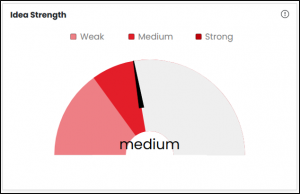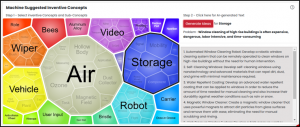
Accelerating innovation through idea evaluation: Your R&D team has a lot of great ideas as a result of a commitment to idea generation and an innovative culture. However, many good ideas will not make it through the innovation life cycle. Even more good ideas, some of which have the potential to benefit your company, will not be patentable.
Idea generation and evaluation are mutually beneficial. However, with so many factors influencing which concepts you prioritize, and which technologies propel your business forward, idea evaluation can appear nearly impossible.
4 Contributing Factors to Idea Evaluation
Throughout the innovation lifecycle, your idea evaluation process should create efficiencies, enabling you to bring both disruptive and incremental innovations to market. Assessment is not as simple as passing or failing a concept; what happens next will differ for each idea worthy of consideration. Some technologies are ready for protection and/or commercialization. In some cases, an idea is not yet ready and would benefit from additional iterations, possibly with additional funding. Other ideas are deemed risky and necessitate additional approval and support from decision-makers.
The next steps in the innovation process are determined by what your evaluation process indicates about how feasible, valuable, strategic, and novel an idea is.
1. Feasible
Every organization’s feasibility is unique, especially when the cost of R&D is a limiting factor. Before proceeding, be honest about whether developing this idea is feasible for your team.
2. Valuable
Novel ideas with commercial applications are extremely valuable to the individuals and organizations that strategically apply them. Consider how this specific technology may deliver ROI and how much investment will be required to bring the innovation to market when evaluating ideas for prioritization.
You should also consider how quickly this idea will contribute to your company’s success, especially if you’re part of a small business or startup. This timeline varies greatly by industry; introducing a new vaccine to market can take 10–15 years, whereas bringing a new consumer product to market may only take a fraction of that time.
3. Strategic
Good ideas are not always beneficial to your business. Is this technology compatible with your current IP portfolio? Or, if not, does it support business objectives such as entering new markets and other expansion initiatives? Whether an idea is a small improvement or a game changer, it should reflect present or future business strategy.
Of course, there are numerous ways for a business to put an idea to use. Many organizations’ IP strategies include licensing and selling technologies. This may have an impact on the types of ideas that are considered strategic for your company.
At this point, it’s also worthwhile to consider how much risk an idea will impose on your company. Some organizations are willing to invest significant resources in an idea that they believe is worthwhile in terms of potential ROI. Others would prefer to limit large bets, restricting financial, legal, and commercial risks.
4. Novel
Patentability requires novelty. It means that your idea is unique and can be protected by a patent, which grants you the exclusive right to use the idea for up to 20 years. Innovative ideas that are both feasible and strategic are extremely valuable to your company. These technologies will almost certainly be prioritized as they progress through the innovation lifecycle, officially protected with a patent or defensive publication, and introduced to the market as soon as possible.
Using AI for Idea Evaluation
Idea Evaluation with XLSCOUT’s Ideacue
XLSCOUT’s Ideacue includes an Idea Dashboard. The easy-to-use dashboard helps you with idea evaluation, brainstorming, and improving idea quality. It provides numerous other insights while significantly increasing the efficiency of research and development. The dashboard assists inventors in quickly assessing the strengths and weaknesses of their ideas in a few simple steps. It gives a qualitative indication of the strength of an idea. Subsequently, using the indicator, inventors can determine whether or not their idea is ready to move forward. Or whether it requires more brainstorming or iterations.

Machine-generated Inventive Concepts
We have also employed Generative AI in our patent search tool. Using this, XLSCOUT is assisting individuals and organizations come up with new and innovative solutions to problems. Ideacue includes an Idea Playground powered by Generative AI for inventors. It suggests machine-generated inventive concepts to inventors, which they can combine with their own ideas to improve. These ideas can be generated based on the user’s preferred technology. As an interactive dashboard, Idea Playground allows users to select inventive concepts and sub-concepts and generate AI-based ideas based on them.


